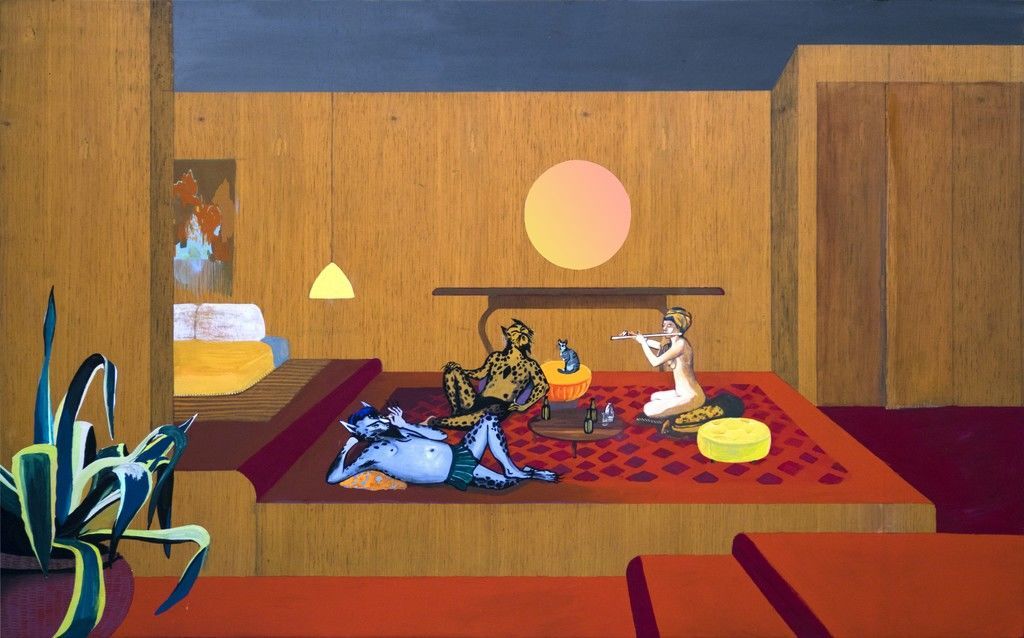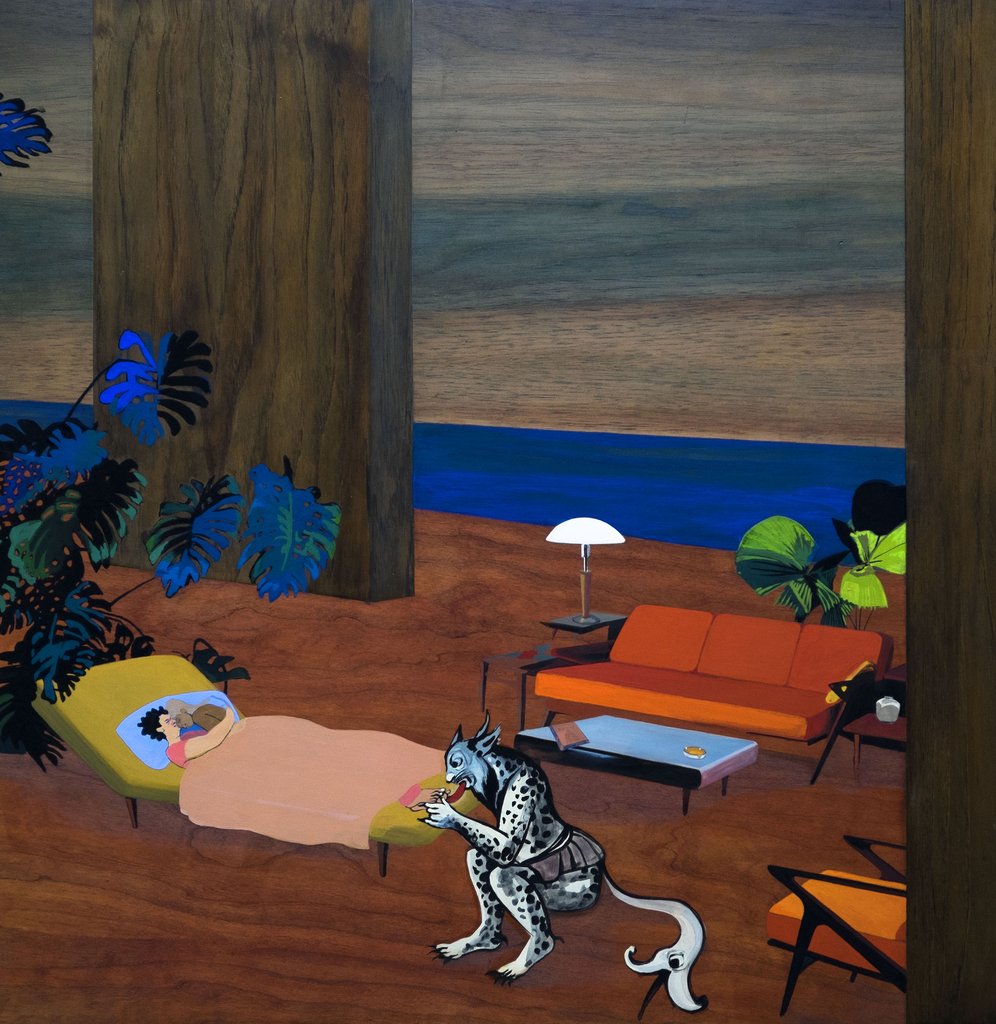
Hulda Guzmán is an artist that takes us to intimate scenes full of warm colors and detail. She was one of the artists that represented the Dominican Republic in the Venice Biennale last year.
In her paintings, Hulda uses space by taking into account interior design, furniture design, and architecture. As the viewer, you feel like you can enter the space and walk through her living rooms and different home sceneries. In order to achieve an illusion of depth, Hulda carefully considers the placement of objects and subjects. This allows her to show different layers in the picture plane. She uses a combination of color and planar perspective, techniques that were developed in the 16th century. These two are usually used together to create the desired depth effect. The selected series is called “Be Kind to Your Demons”. In this series, Hulda is influenced by psychoanalyst Carl Jung, who claims that we all have a part of our personality that we are not conscious of. He calls this the “shadow” self. Usually, we develop this after we get some sort of rejection growing up, and we end up rejecting that aspect of ourselves because we feel ashamed of it. This is our unknown side. In the paintings in this series, the shadow is represented by demons.


We see nightmares as terrifying visions we have at night, when often, they consist of a recollection of our repressed thoughts or emotions. Dreams come from the emotional centers of your brain. They make connections regarding your feelings that your conscious self does not make while awake. Nightmares specifically tend to be caused by stress and/or anxiety and can serve to become aware that you are harming yourself with negative thoughts. In this painting, there is a dormant couple and a demon at the foot of the bed, licking the subject’s feet. This could represent the first attempt to awaken her unknown side.
In “A Haircut”, there are now three demons, as if the subject has fully awakened and is trying to deal with all her personal shadows and repressed emotions. Slowly, the subject starts to evolve to a moment of conciliation. In the scene, the subject is getting a haircut by her demons. It is an instance in which she struggles to become more confident with how she views herself, or how she always has wanted to look like but was afraid to do so. It makes me think about how many of us change our appearances to fit in and be accepted by society.
I particularly find “A Snack”, the most interesting because we see the subject in total comfort with her demon; sharing food while being naked. The demon enjoys it too. It’s a representation of complete acceptance of the shadow self. Hulda paints demons that look far from threatening, emphasizing that what we become scared of, is what we create in our heads. We have the power to control how we feel and to accept who we are. The shadow is just something that develops in your mind.
Specifically, these three paintings show how the shadow and the subject evolve. The first confrontation of the shadow is in a nightmare, but then she has an encounter with her unknown side. Finally, she fully embraces her shadow, learning to integrate it into her life, resulting in the final painting, A Snack.
The series, Be Kind To Your Demons represents a moment of personal growth. We must remember that we are in control of toxic thoughts that lead to toxic behaviors. Let go of the shadow, and you will find the light.

Special thanks to Hulda Guzmán for sending us images of her captivating paintings.
